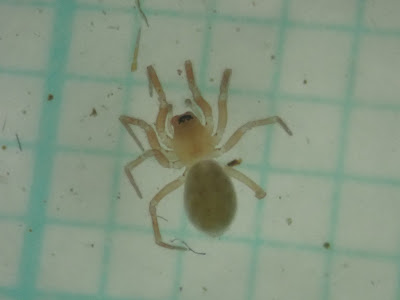Pan-species listing has a brand new website!
Posted by Graeme Lyons , Saturday 13 January 2024 18:13
How much things change in just three months! It only seems like five minutes ago we were discussing trialling putting the UK Species Inventory onto BUBO. It soon became evident that maintaining your list in BUBO and then adding your total on to the old BRC PSL website was just never going to work in the long run. So we started thinking, could we rebuild the website inside BUBO? If we could, it would need it's own identity though, to stop it getting lost in BUBO and it would need its own web address. We also got a slick new logo from Mark Lawlor, isn't it great?!
So after much work (mostly from the guys at BUBO I should add - but it's certainly taken up a lot of my time too), here it is: https://panspecieslisting.com. You don't need a new login ID and password, just use your existing one from BUBO and everything you have added will be there. They have done a fantastic job, it looks and feels great and does what we dreamt about when we first came up with the idea of a PSL website over 10 years ago but until now, were not able to do.
The great thing is, it's run internally, so it will be easier to update and evolve than it ever was before. It's still free but it does cost to run it, so do please make a donation if you can.
So what next for the BRC site?
Well, we'll keep it running for maybe the rest of the year, to give those a chance who have not added their lists on to the new site, to do so.
I will no longer be accepting new accounts to the old site. All new pan-species listers should go to https://panspecieslisting.com and sign up there.
Once you are happy to say goodbye to the old site, please write something along the lines of "As of 13th January 2024, my pan-species list is now up to date on https://panspecieslisting.com and I am no longer updating my list here" in the comments section of your profile.
A huge thanks to David Roy, John van Breda, Biren Rathod, Charles Roper and Bob Foreman as well as Biological Records Centre and Sussex Biodiversity Record Centre for their help and support over the last decade. It's a bit sad saying goodbye to the old site as I have pretty much used it every day for a decade but not that sad - as the new one is so awesome!
What's different on the new site?
We haven't gone for a like-for-like rebuild of the old site. Many of the features of the BRC site were not well used (especially those that emulated social media) so we haven't tried to replicate those. Energy has been focused on making the areas that were well used, much better.
Obviously, the huge difference is that you can now tick off all UK species, see other people's lists and use all the neat functions like 'targets' and 'blockers' but most of you will be used to this already, as it's been happening on BUBO for the last three months. See some of my earlier posts on this if you are not up to date.
We have updated the the 'Rankings News' section on the front page of the old site (on the new site, now called 'Listing Milestones'). I think it looks great, it doesn't have ranking changes this time, but more detail on progression through the taxonomic groups. And those grey boxes whenever you hit a multiple of a thousand? Yeah. We kept those, in all their glory.
We have new summary stats, showing the total number of species that all listers collectively have listed (currently 21,821) and the total number of listers and lists too.
We've updated the 'about' info (here), included an updated section on 'guiding principles' (a rebranding of what we used to call 'the rules').
That's enough of me waffling on, go and have a look around!
This just leaves one question. What exactly does happen when you reach 10,000 species? I have no idea, and it's a tightly guarded secret by the person who coded it. Here are some suggestions:
- The site automatically orders you a cake.
- Chris Packham offers to do all your data entry or all your washing up for a year (your choice).
- David Attenborough comes around your house, impersonates your favourite song bird for one hour, then awards you an oversize medal that you MUST wear every day for the rest of your life.
- You get this message: "You have completed pan-species listing. Your list will now be wiped and you must start again, or get a new hobby".
- Some variation on the spectacular grey box, maybe with a gold frame and a fanfare of trumpets.












